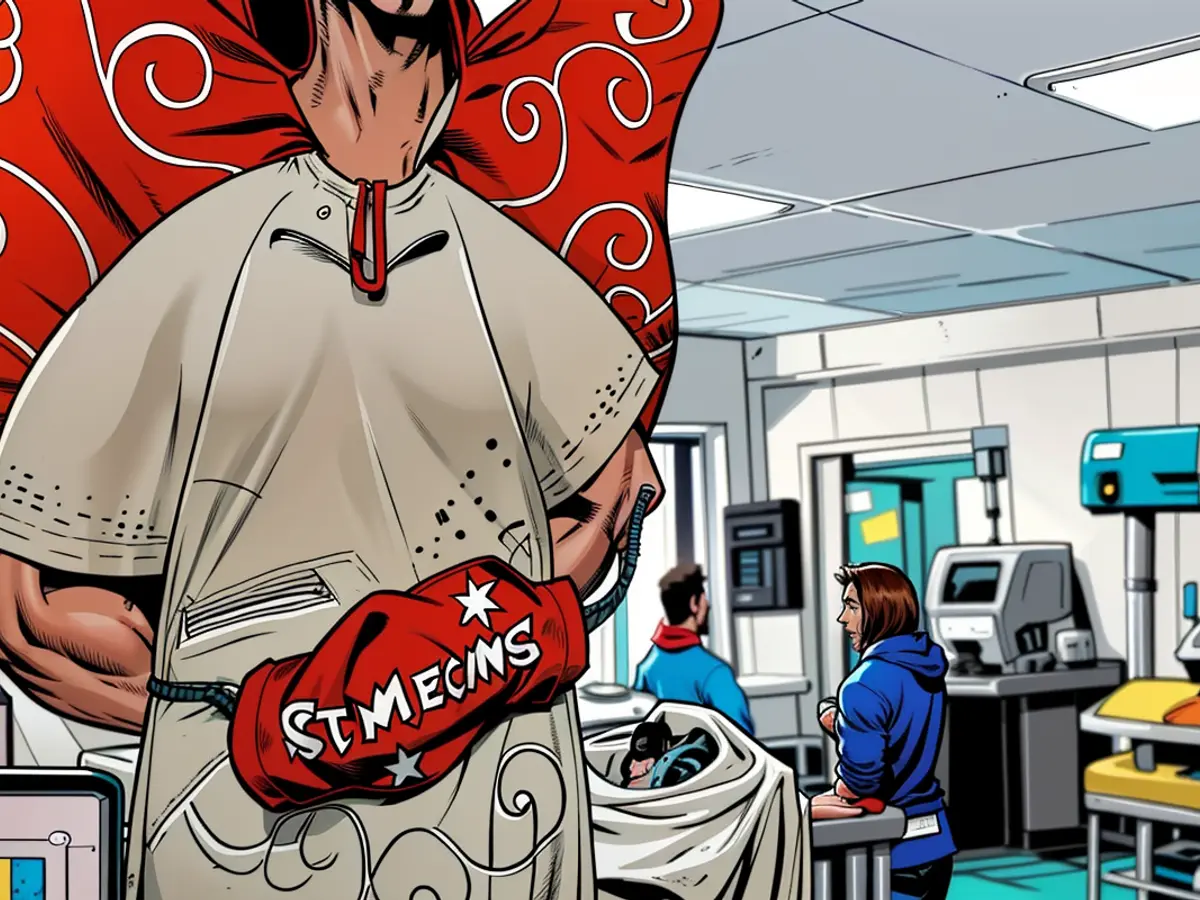Medical Care Healthcare Professionals - Visiting children in intensive care units: The reason behind the allowance
In various children's books, we find heroes like firefighters, divers, and even astronauts. This equipment, including breathing masks, is considered thrilling. Contrastingly, when taking kids to visit hospitals' intensive care units (ICUs), a fear is often triggered. This anxiety is based on the notion that these spaces are too packed with cables and gadgets. Furthermore, the unusual odor and sight of sick or even dying individuals can be psychologically adverse.
However, when a parent, elder, or sibling endures a serious condition, children have never been preoccupied with illness or death. Recently, the active association Divi (German Interdisciplinary Association for Intensive and Emergency Medicine), located in Berlin, shared a paper with recommendations for children's visits to ICUs. Their findings suggest that children can handle these experiences very well if properly informed. There is also no special risk of infection for them.
A visit to the hospital can be advantageous for little ones
Although some unfortunate experiences have been recorded, the researchers questioned whether we should limit children's hospital visits entirely. On the flip side, not visiting may result in added anxieties and uncertainties. From a psychological standpoint, a visit to the ICU can be a worthwhile experience that challenges feelings of helplessness and dread, while building resilience.
The intensive care nurse Dieter Filser from Franconia argues that preventing children from visiting hospitals would only cause further apprehension. "We'd like to foster trust in doctors and nurses. Banning them from entering will convey the message that hospitals are unsafe," he explains. Usually, kids wouldn't witness suffering first-hand. "If someone is suffering, medicine and nursing have failed is the children's perspective."
Constructive Tours During Recovery
Some establishments, such as the University Clinic Würzburg, have implemented these recommendations. Children's visits have been allowed since 2020, occurring a handful of times annually. Patrick Meybohm, director of the Polyclinic for Anesthesiology, Intensive Medicine, and Emergency Medicine at Würzburg, affirms that these visits can aid in their loved one's recovery. This is particularly significant during the post-illness phase. "The presence of children can propel the patients to continue and exercise patience, determining physical strength."
The visits are strategically coordinated by every team member involved. This procedure aligns with Divi's guidelines. In addition to providing well-planned tours, the association also designed workshops and short training courses for staff to effectively discuss experiences with children.
Sibling Visits on Neonatal ICUs
On neonatal ICUs and other similar units, siblings' visits have long been prevalent. This shift in attitude commenced in the '80s. Christoph Bühler, President of the Society for Neonatology and Pediatric Intensive Medicine, shares that the presence of sibling children is often undeterred by the gravity of their sibling's hospitalization. Some children, in fact, may feel jealous if their sibling spends an extended period in the hospital. By allowing visits, siblings can be incorporated into their family's situation.
A surfeit of cables and devices doesn't scare children, he explains. "Children perceive medical equipment as a regular aspect of their familiar context, like being aboard a spaceship." The most crucial factor in making these visits successful entails preparing them for their sibling's critical condition and possible sedation.
Moreover, children living with disabled or chronically ill parents, like Kerstin Weiß, the chairwoman of the Federation of Disabled and Chronically Ill Parents, are accustomed to witnessing apparatuses such as prostheses and breathing machines.
Never Elude the Topic of Death
Death and loss are also important topics to discuss openly with children, as per Divi's recommendations. Even when life-sustaining equipment is shut down, it's advisable to involve the children. Several projects, such as "Hospice Makes School", "Last Help Kids & Teens", and "Sarggeschichten," openly address mortality and dying for children.
Children's camaraderie with the truth about their circumstances can help them process these realities. "Children pick up on secrets, they don't feel protected but fearful instead. They need goodbyes," explains the team behind Sarggeschichten. If they are shunned from these events, they lose a significant tool for coping with losses.
Conclusion
Children should not regularly flock to ICUs, but Divi emphasizes that a child's presence should never be imposed upon if they or the patient don't want it. Other options, like painting a picture or writing a letter, can be offered. Some medical stations also provide video visits as alternatives. Activities like these can equip kids with a better comprehension of medical procedures, reduce their anxiety, and foster emotional balance.
For getting kids ready for a visit, there are books such as "Emma visits the ICU" or "Visiting the ICU." The Klinikum rechts der Isar from the Technical University of Munich (TUM) has developed a coloring book specifically for kids, modeled after a British method. This online booklet describes what an ICU is, while providing children with a worry tree as a coping mechanism. Additionally, a leaflet addressing children's questions and offering visit-related advice can be obtained from the Divi.
Read also:
- Christoph Bühler, the president of the Society for Neonatology and Pediatric Intensive Medicine based in Franconia, supports frequent sibling visits to neonatal ICUs.
- The intensive care nurse Dieter Filser advocates for allowing children to visit hospitals, arguing that restricting access conveys the message that hospitals are unsafe.
- The German Interdisciplinary Association for Intensive Care and Emergency Medicine, located in Berlin, recommends allowing children's visits to ICUs if properly informed, as they pose no increased infection risk.
- In Berlin, the Intensive Care Unit of the Charité Hospital offers guided tours for children, aiming to demystify the medical environment and build their resilience.
- Researchers at the Frankfurt University Hospital found that children who visited the ICU reported lower levels of anxiety and fear compared to those who did not.
- The Children's Hospital in Hamburg, Germany, established a program for children to participate in weekly meetings with a psychiatrist and a play therapist to discuss and cope with their experiences in the ICU.







